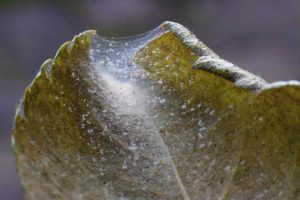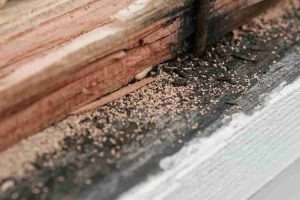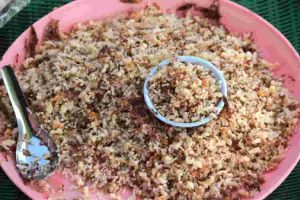Dealing with a flea infestation can be a daunting task for pet owners, but it doesn’t have to be. Fleas are not just an annoyance; they can cause severe discomfort for pets, leading to itchy bites and even allergic reactions. The key to effectively handling a flea infestation is consistent and thorough treatment of both your pets and your home.
We need to start by treating all pets in the household. Fleas can jump from one pet to another, so it’s important to ensure every furry friend is covered. Using a combination of products like flea combs, oral treatments, and flea collars can help eliminate these pests. Flea infestations thrive in environments where pets live, so we must pay attention to maintaining a clean home. Regularly vacuuming carpets, washing pet bedding, and using insecticidal products can significantly reduce flea populations.
Remember, prevention is just as important as treatment. Keeping pets on year-round flea prevention medications, as recommended by veterinarians, can help avoid future infestations. By staying proactive and vigilant, we can keep our pets happy and our homes flea-free.
Understanding Flea Infestations
Flea infestations can be a big problem for pets and their owners. By learning about the life cycle of fleas and how to spot their presence, we can better tackle this issue.
Life Cycle of Fleas
Fleas go through several stages in their life cycle: eggs, larvae, pupae, and adults. Adult fleas lay their eggs on the host, often our pets. These eggs typically fall off and hatch in the environment, such as carpets or bedding.
After hatching, flea larvae emerge. These tiny creatures feed on organic matter, including flea dirt (flea droppings), to survive. They’re almost invisible to the naked eye and often burrow deep into fabrics.
Flea larvae then spin cocoons and enter the pupae stage. During this phase, they can remain dormant for several weeks or even months, waiting for the right conditions to emerge as adult fleas. Adult fleas are the biting pests we usually notice, and they immediately seek out a host to feed on and breed.
Identifying the Presence of Fleas
Recognizing a flea infestation is crucial. One of the first signs is our pet’s excessive scratching or biting at certain areas, particularly the neck and tail. We should inspect these areas closely as fleas often cluster there.
Look for tiny, moving insects or black particles on our pet’s skin and fur. These particles might be flea dirt, which is flea excrement made of digested blood. When placed on a wet paper towel, flea dirt will turn reddish-brown.
Checking our pet’s bedding and favorite resting spots is also vital. Flea eggs and larvae can thrive in these areas. Regular inspection helps us catch and address infestations early before they escalate. For more detailed steps on handling fleas, refer to this flea control guide.
Treating Fleas on Your Pet
When dealing with fleas on our pets, it’s crucial to choose effective treatments and apply them correctly. We need to ensure the safety and comfort of our furry friends during this process.
Choosing the Right Flea Treatment
Selecting the right flea treatment depends on the type of pet and the severity of the infestation. For immediate relief, topical treatments such as spot-on liquids can be applied directly to the pet’s skin, usually between the shoulder blades. These treatments kill fleas quickly and provide protection for several weeks.
Another option is oral medications. These are often flavored and can be given directly to our pets or mixed with their food. They work from the inside out, killing fleas within hours.
Flea collars are long-lasting and continuously release chemicals that repel and kill fleas. However, they are often weaker than topicals or oral treatments. It’s essential to check if our pet has any allergies or skin sensitivities before using a flea collar.
Additionally, natural remedies like coconut oil can be used. Simply rub it into the pet’s fur to kill and repel fleas while moisturizing their skin. Always consult with a vet before starting any treatment to ensure it’s safe for our pet.
Tips for Applying Flea Medications
Applying flea medications correctly ensures their effectiveness and our pet’s safety. For spot-on treatments, part the fur at the base of the neck and apply the liquid directly to the skin. Avoid touching the treated area until it dries to prevent the medication from rubbing off.
When using oral medications, follow the dosage instructions provided by the vet carefully. If our pet is picky, try hiding the pill in a treat or using a pill pocket. Never split a pill unless instructed by the vet, as it may affect the medication’s efficacy.
Regularly combing our pet’s fur with a fine-toothed flea comb can help remove any remaining fleas and flea dirt. This should be done both before and after applying treatments. Be consistent with treatments and reapply as necessary according to the product instructions.
We should also wash all pet bedding in hot water to kill any fleas or eggs. Keeping our pets on a year-round flea prevention plan can help avoid future infestations.
Eradicating Fleas From Your Home
To successfully eliminate fleas from our homes, we need to address both cleaning strategies and home treatments. Effective cleaning removes fleas and eggs, while treatments help ensure they do not return.
Cleaning Strategies
Cleaning our homes thoroughly is essential in getting rid of fleas. Vacuuming regularly helps remove adult fleas, larvae, and cocoons from carpets and floors. We should focus on areas where our pets spend the most time, like pet bedding and furniture.
We need a vacuum with strong suction. After vacuuming, empty the vacuum bag or container outside. This prevents fleas from re-infesting our home.
Washing bedding, blankets, and pet items in hot water can kill fleas and their eggs. Using the highest heat setting will help. It’s important to clean items our pets come into contact with, including their toys.
For deeper cleaning, we can use a steam cleaner. The combination of high heat and soap is effective in killing fleas at all life stages. We should pay special attention to cracks and crevices where fleas might hide.
Insecticides and Home Treatments
Treating our homes with insecticides can prevent a recurring infestation. Products containing permethrin or other flea-specific ingredients can be highly effective. It’s important to follow the instructions on these products to ensure they are used safely and effectively.
We can also use safe home treatments like borax or salt. Sprinkling these on carpets and leaving them for a few hours before vacuuming can help kill fleas. It’s essential to repeat this process for continued effectiveness.
Spraying insecticides around the garden can help prevent fleas from entering our home. We need to treat areas where our pets spend time, especially during the warmer months when fleas are most active.
Foggers and flea bombs can be used for severe infestations. These products should be used with caution, as they can be toxic to pets and humans if not handled correctly. Always follow the product guidelines and consider vacating the home while treatment is underway.
By implementing these strategies, we can help create a flea-free environment for our pets and ourselves.
Preventing Future Infestations
Effective flea prevention requires consistent efforts both for our pets and our homes. We can follow specific strategies to protect our pets and property while also maintaining regular upkeep and monitoring.
Protection Strategies for Pets and Property
To protect our pets, we should use spot-on treatments or flea control products recommended by a vet, such as those from Green Cross Vet. Ensure our pets take preventive medicines regularly.
Regular grooming with a flea comb helps identify early signs of fleas, such as the presence of flea droppings in their fur. Washing pet bedding frequently in hot water and using pet-safe powders can further reduce flea presence.
For our property, keep the yard tidy. Trim tall grass, remove leaf litter, and prevent rodents which can carry fleas. Fleas prefer shady areas, so expose the yard to sunlight as much as possible. Consider using outdoor flea treatments to target potential flea habitats around the home.
Regular Maintenance and Surveillance
Regular vacuuming is crucial. It helps get rid of flea eggs and larvae from carpets, rugs, and furniture. Ensure to empty the vacuum bag outside to prevent fleas from escaping back into our home.
Cleaning bedding, especially pet bedding, frequently with soap and water is essential. Keeping our homes dry and well-ventilated also deters fleas.
Monitor pets closely for signs of itching and scratching. Check them often, particularly around the neck and tail, which are common areas for fleas. If we notice any symptoms, act immediately to avoid an infestation.
Additionally, we could use flea traps found at pet stores to monitor and control flea populations inside the home. With these steps, we can effectively manage and prevent future flea infestations.
On-Time Service

5 STAR SERVICE BASED ON 100+ GOOGLE REVIEWS
PET & FAMILY FRIENDLY TREATMENT

ALL YEAR-ROUND PROTECTION
Take Back Control Now
8
REASON TO CHOOSE SAFE PEST CONTROL
- Guarantee protection all year-round
- 30 Years Collective Experience
- An impeccable reputation across Sydney's Suburbs
- Certified treatments & written Warranty On all work carried out
- Family Owned & Operated
- Rated #1 Pest Control In Sydney NSW
- No Mess, No Smell
- Family & Pet Friendly Treatments
REQUEST A QUOTE








